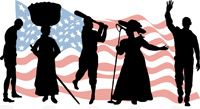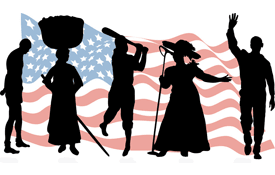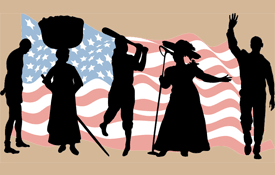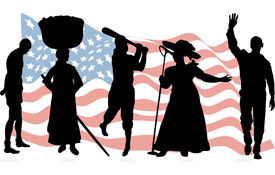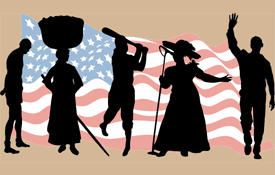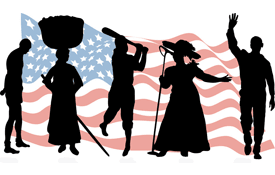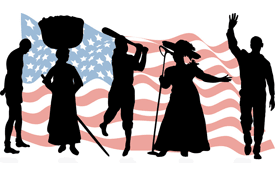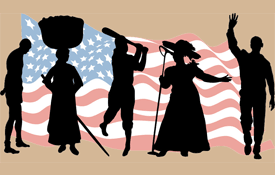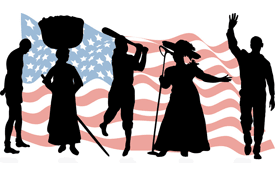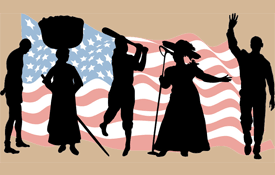Categories
-
0 An American Odyssey of the First Black NASCAR Driver
- Sports
- by Hugh Smith
- 08/05/2009
Wendell Scott was no angel. At age 20, he had his first encounter with the law. The so called "Jackie Robinson" of NASCAR (National Association for Stock Car Auto Racing), despite the odds, succeeded using his street smarts to win at the racing game. It didn't hurt that Scott perfected the art of running moonshine in fast cars in the back roads of south - central Virginia prior to breaking the stock car color line in 1952. Hard Driving: the Wendell Scott Story, the American Odyssey of NASCAR'S first black driver is a dramatic profile of an inspired achiever who wouldn't give up while pursuing his dream. The roadblocks were many, back in the Brown vs. the Board of Education days, as the modern civil rights struggle was kicking off in the 1950s. Hard Driving gives a blow by blow description of Scott's emergence as an African American community celebrity across the South at race tracks where his presence was ridiculed by the racists of the day. I enjoyed reading Scott's perspective on exactly what happened during the early years of his career. As a black history month project, the Wendell Scott story deserves your attention.
-
- Music
- by Hugh Smith
- 07/03/2009
The story of Michael Jackson, (1958 - 2009), is not complete without the story of the Jackson 5. Michael was born in Gary, Indiana on August 29, 1958. He is one of nine children. When Michael performed with four of his brothers in 1963, at age 5, he was included in the act primarily for the novelty effect. By 1964, The Jackson 5 were conquering the Gary Indiana talent show circuit. In 1967, the brothers appeared at the Apollo Theater in New York City. The same year, they auditioned for Motown Records. "I Want You Back," their first single with Motown in 1969, became a number one hit. On the strength of this song, and the album "Diana Ross Presents the Jackson Five," the group received national television exposure on the Ed Sullivan Show. 1970 saw four number one singles for the Jackson 5. The producers at Motown realized that Michael’s individual talent was worth putting in the spotlight. Between late 1971 through 1972, singles "Got to Be There," "Rockin’ Robin," "I Wanna be Where You Are," and "Ben" firmly established Jackson as a solo star. The string of hits on Motown ended for the Jackson 5 in 1975. Michael, Jackie, Tito, Marlon, and Randy signed with the Epic label in 1976. Jermaine Jackson remained with Motown. Berry Gordy retained the rights to the name The Jackson 5, so the brothers assumed their new professional name, The Jacksons. By 1978, Michael was truly coming into his own as a songwriter, actor, and singer. He starred with Diana Ross in the motion picture musical, "The Wiz." "The Wiz" was scored by Quincy Jones, who would later produce Michael’s most successful commercial work. 1979’s "Off the Wall" album launched Michael Jackson toward super stardom. The album sold over 8 million copies. "Don‘t Stop til You Get Enough" from Off the Wall won Michael his first Best R&B Vocal Performance Grammy. Michael’s electrifying 1983 performance of "Billie Jean" on the television special "Motown 25: Yesterday, Today, and Forever" solidified his place as a pop icon and superstar. By 1984, the "Thriller" album, (released in 1982), won 8 Grammy Awards. Jackson has worked with the biggest names in rock, included 1982 & 1983 duet collaborations with Paul McCartney, ("The Girl is Mine," "Say, Say, Say"), and "State of Shock," recorded with Mick Jagger in 1984. Michael teamed up with Lionel Richie in 1985 to co-author, "We Are The World," a song written to help world hunger. By 1986, Jackson was working with film giants Francis Ford Coppola and George Lucas on his short film project, "Captain EO" for Disneyland and Disneyworld. 1987 saw the release of "Bad," an album that produced four number one singles. Doubleday published Michael’s autobiography, "Moonwalk," in 1988. The "Dangerous" album was released in 1991. In 1993, Jackson entertained during the Super Bowl, appeared on the Oprah Winfrey Show, and received a Living Legend Grammy Award. Like many celebrities, his private life has not been without controversy. Despite being the focus of tabloid journalism, Jackson has attained a place in musical history that few entertainers have achieved. * Biography courtesy of Empower Encyclopedia *
-
0 Iconic African Americans in Philadelphia Go Digital
- Research
- by Hugh Smith
- 06/24/2009
Audacious Freedom, African Americans in Philadelphia, 1776 - 1876, is a modest sized but creative new 2009 black history exhibit with a focus on 18th and 19th Century City of Brotherly Love legends. The African American Museum in Philadelphia, (just a block away from the National Constitution Center), is hosting this new permanent exhibit which opened on Juneteenth. On a recent Sunday, I toured the galleries and was pleasantly surprised by the electrified presence of 10 symbolic representatives of the era, who tell their stories in the first person, through the magic of digital video technology. Here is Octavious V. Catto, the post Civil War Philadelphia educator, talking to his audience. Each of the 10 historical figures recreated by actors comes alive in life-sized high definition screens. Visitors can press buttons on the kiosks to interact with the personalities who talk about the issues of their day. Kids have their own special area of the presentation allowing them to interact with the exhibit and experience how post Civil War kids connected with day-to-day living. According to AAMP President and CEO Romona Riscoe Benson, “Audacious Freedom gives us the opportunity to celebrate the richness of the culture and experiences of people of African descent.” Although the video elements are a highlight of the exhibit, visitors can still view traditional pictures, artifacts, and timelines documenting the rich contributions African Americans have made to Philadelphia's important history. Visit aampmuseum.org for more information.
-
0 How Eartha Kitt Created a Black History Legend
- Entertainment
- by Hugh Smith
- 05/27/2009
Eartha Kitt, (1927 - 2008), lived an amazing true-life story. She became the diva of Europe during the 1950's as an electrifying cabaret singer. Her dating exploits with contemporary playboys filled the gossip pages with celebrity news. Outspoken and independent, Kitt received a backlash from the African American community throughout her career for not being "black enough." Despite this challenge, Eartha Kitt eventually flourished in the USA on stage, on screen, and on records with Grammy, Oscar, and Tony award nominations. At just 16 as a member of the Katherine Dunham Dance Company, Eartha toured Mexico, South America, and Europe. Follow this Eartha Kitt Timeline: Films - Accused (1957), Anna Lucasta (1959), and Syanon (1965) From 1968 to 1974 Kitt performed primarily in Europe. In the late 1970's, she focused on her recording career In the 1980's, she spent a lot of time on her Connecticut estate More films in the 1990's, including Boomerang, Ernest: Scared Stupid, and Fatal Instinct Kitt won the Daytime Emmy Award for outstanding performer in an animated program for Disney's The Emperor's New School (June 13, 2008) She's best remembered for her role as Catwoman on the TV series Batman Kitt proved to be a huge hit with the Paris nightclub crowd, and is known for her sultry, sexy cabaret act.
-
0 The First African American Steamboat Captain: R.J. Salisbury
- History
- by Hugh Smith
- 04/29/2009
R.J. Salisbury piloted the steamer "Shiloh" as Captain between 1904 and 1908. He took the pilot’s license examination at the U.S. Steamboat Inspectors headquarters in Norfolk, Virginia in 1900. Despite Jim Crow laws, hesitation among officials to sign his license, and resistant by engineers to sail with him, Captain Salisbury persevered to become the first African American steamboat captain.
-
0 Capitol Men Chronicles the First Black USA Congressmen
- Government
- by Hugh Smith
- 03/18/2009
Blanche Kelso Bruce, Hiram Revels, and P.B.S. Pinchback get most of the credit. Right after the Civil War, a very large number of African Americans were elected to Congress, almost exclusively by black constituents. Historian and author Phillip Dray reveals how during Reconstruction, African American legislators by the hundreds took their place in black history. Capitol Men: The Epic Story of Reconstruction Through the Lives of the First Black Congressmen is an eye-opener and a must read. We know how this story ends, with 'black codes,' Jim Crow laws, and blatant discrimination to "zero out" the presence of African American Congressional leadership by the end of the 19th Century. Discover the fascinating story for yourself by learning more about these capitol men.
-
0 Black History Month Highlights 2009
- Research
- by Hugh Smith
- 02/25/2009
Black History Month 2009 still has a few days to go. So far, we've had over 20,000 searches through our main website (BlackHistoryPeople.com) for interesting black history people. Here are our top 10 searches (in order) for February, 2009: Rosa Parks Harriet Tubman Martin Luther King Jr. Bill Cosby Barack Obama Jesse Owens Louis Armstrong Daisy Bates Jackie Robinson Thurgood Marshall Thanks for all of your excellent suggestions and feedback.
-
0 Benjamin Banneker: Astronomer and Mathematician
- Science
- by Hugh Smith
- 02/18/2009
Benjamin Banneker: surveyor, astronomer, mathematician, almanac author, clock maker, and peace activist was born on November 9, 1731. A Quaker based education excelled Banneker's thirst for knowledge during his teenage years. After limited formal schooling, much of his knowledge of mathematics and science was self-taught. At age 31, Banneker made his first clock from wooden parts. He published almanacs from 1792 through 1802. Banneker in less than a month created a surveyor’s map (1791) for Washington D.C. (rescuing city planners from the inaccurate calculations of previous surveyors). This African American (1731 - 1806) is responsible for creating one of the world’s most beautiful and historic cities.
-
0 A Graphic History of African Americans
- History
- by Hugh Smith
- 02/13/2009
Over 200 pages spanning 400 years of intriguing stories captures your attention in Still I Rise: A Graphic History of African Americans. Graphic in this case stands for illustrated and honest, as author Roland Laird tells the real story of African Americans from the dawn of slavery to the present. I traveled to Trenton, New Jersey to talk with Roland face-to-face about the creation of Still I Rise and the unique angle governing the presentation of this book. Watch the video interview to discover much more. You can reserve your copy of Still I Rise: A Graphic History of African Americans.
-
0 100 Years of the NAACP 1909 – 2009
- History
- by Hugh Smith
- 02/03/2009
The birthday party will last one year, and it starts on Thursday, February 12, 2009. 1,700 chapters across the USA will celebrate the 100th anniversary of the NAACP through February 12, 2010. Here is the official NAACP 1909 - 2009 timeline prepared by the National Associated for the Advancement of Colored People. A century of tenure is behind their 100 year advocacy as a leader in the fight for civil rights, dignity, and equality. Check out our own BlackHistoryPeople.com timeline featuring 15 NAACP facts (from Empower Encyclopedia): W.E.B. Du Bois was a co-founder of the NAACP in 1909. James Weldon Johnson, (1871-1938), wrote the famous poem, "Lift Every Voice and Sing" - now known as the Negro National Anthem. He joined the NAACP in 1916, and became Executive Secretary of the organization in 1920. Mary McLeod Bethune (1875 - 1955) was a champion for education, civil rights, and women's rights. She worked closely with the NAACP, and founded the National Council of Negro Women in 1935. An activist for civil rights and education, Daisy Bates co-founded Arkansas' State-Press Newspaper. In 1953, she was elected President of the Arkansas Conference of NAACP branches. Dr. Joel E. Spingarn introduced the Spingarn Gold Medal in 1914 while he was Chairman of the Board of the NAACP. The Spingarn award represented the highest of African American achievement, (similar to the NAACP Image Awards today). Attorney Constance Baker Motley, (1921 - 2005), started her brilliant civil rights career with the NAACP Legal Defense Fund in 1945 as a law clerk. Daisy Lampkin, (1883-1965), increased the visibility and membership of the NAACP through her fund raising leadership. She was involved in Pennsylvania State politics (1928) becoming the first African American woman from the commonwealth elected as a delegate at large to the GOP convention. Lampkin began her career with the NAACP in 1929, serving the organization in numerous leadership roles. Thurgood Marshall, (1908-1993), became assistant special counsel for the NAACP in 1936, then chief counsel in 1938. Dr. Martin Luther King Jr., (1929 - 1968), organized the Montgomery bus boycott with Rev. Ralph David Abernathy and the NAACP in 1955 after Rosa Parks refused to surrender her bus seat to whites. In the 1960's Vernon E. Jordan Jr. was quite involved with civil rights as Field Secretary for Georgia's NAACP. Margaret Bush Wilson was elected Chairman of the Board of the NAACP in 1975. Benjamin L. Hooks, in 1977, succeeded Roy Wilkins to become Executive Director of the nation's top civil rights organization, the NAACP. Kweisi Mfume entered the U.S. House of Representatives in 1987. He served until the end of the 104th Congress. After Congress, Mfume accepted the position of President and CEO of the NAACP. An outspoken critic of offensive lyrics by music industry artists, Philadelphia native C. Delores Tucker, (1927 - 2005), served as Vice President of the Pennsylvania NAACP. Dr. Fredda Witherspoon, Ph.D., was President of the Missouri NAACP.
